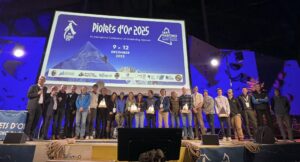The fever for records and competition between commercial expeditions on 8,000’ers are often criticized, but high-difficulty challenges on virgin faces are also subject to fierce (though often more subtle) competition.
U.S. climbers Sam Hennessey and Michael Gardner are currently attempting a route on the north face of the formidable Jannu East. It’s their third attempt. Before departure, they confirmed the goal but did not share details of the route they had in mind. A few days after the Americans left for the Kangchenjunga region, French star Benjamin Vedrines revealed he was climbing the same face of the same mountain, together with regular mates Leo Billon and Nicolas Jean.
Yesterday, Nepal’s Department of Tourism updated its “Royalty Report.” The report lists the number of teams on each peak. There was at least one major surprise: there is a third team with a permit for Jannu. However, it is not specified if this team will aim for the Eastern or the Main (7,710m) summit point, or from which side they will climb.
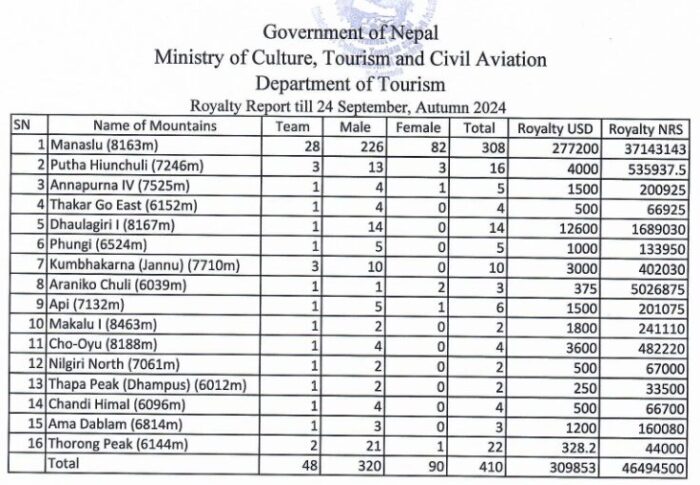
List of climbing permits issued by the Department of Tourism of Nepal on September 24, 2024
Quiet Holecek
Marek Holecek of the Czech Republic is back in Nepal, with another virgin face in mind.
“On Sept. 24, I’m flying to Nepal to a beautiful mountain with an intact wall,” he told ExplorersWeb. “I saw her for the first time in 2004 and since then she has been coming back to me in my dreams. So this fall I’m ending my courtship and going for it.”
That is all the Czech climber, also busy writing his fifth book, was ready to share. His target peak and the number of members in his team may appear on the next list from Nepal’s Department of Tourism.
Bitter controversy
The Jannu issue brings back memories of a bitter controversy that followed the first ascent of Tengkampoche’s northeastern pillar by British climbers Tom Livingstone and Matt Glenn. In the fall of 2021, the Brits climbed the same route attempted by Quentin Roberts and Jesse Huey of the U.S. in the spring. They did not mind that Roberts and Huey had publicly announced that they would return for another try the following year. Livingstone even admitted he ate power bars left by the American team among some gear cached on the wall.
After a bitter exchange of messages and a heated debate in the climbing community spinning around freedom and ethics, Roberts chose to drop the subject. But climbers around the world took note. These days, climbers rarely share much information about their climbing plans before an expedition finishes, and only if they succeed.
We only know of some of the most interesting climbs this year because the climbers were supported by projects like cutting-edge grants (this is the case for Hennessey on Jannu East). Even then, we only get the names of the climbers and their targetted peak.
Guessing game
The weekly climbing permits update from Nepal’s Department of Tourism provides some interesting tidbits.
The latest update shows the large number of Manaslu teams, the Russian expeditions on Dhaulagiri and the south side of Cho Oyu, and, interestingly, one permit granted to two lonely climbers aiming for Makalu.
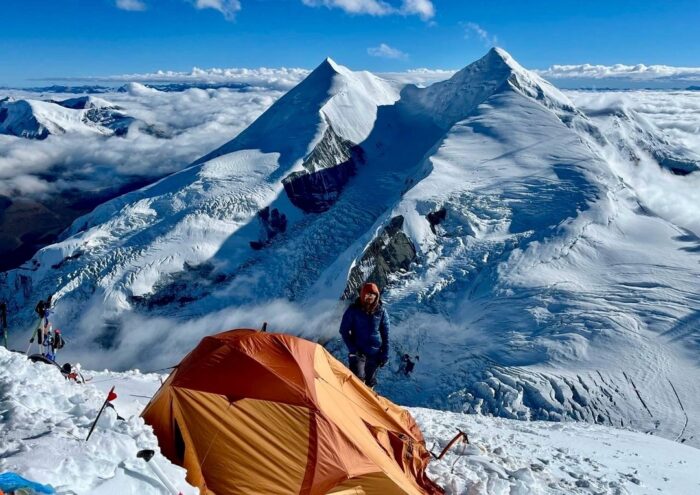
Dhaulagiri this week has only one team on the mountain. Photo: Russian Dhaulagiri Expedition
On lower, but often highly difficult peaks, there are several listed that are often offered for guided expeditions. These include Putha Hiunchuli (Dhaulagiri VII) and Thorong Peak in the Annapurna circuit. There is a three-member team going to Ama Dablam which could be the first of many expeditions that will line up on the normal route in the next few weeks. But who knows? Perhaps it is something more exciting.
Another potentially interesting permit refers to a three-person team, two of them women, who will try Araniko Chuli. This is a 6,039m peak whose value is not so much the technical difficulty as its location near Dolpo, on the border with Tibet. It was first climbed in 2001 by Tamotsu Ohnishi from Japan and Nepalese Sherpas Ang Purba and his wife Pasang Diki.
A six-member team will attempt Mount Api, the highest peak in the northwestern corner of Nepal. The rarely visited peak is 7,132m but has a remarkable prominence of 2,040m. Its south face is 3,300m long! After two failed attempts, with one ending in tragedy when two members died, the peak was first summited in 1960 by a Japanese team from the Doshisha Alpine Society. The southwest face was climbed by an all-star Slovenian team in 1996. The Himalayan Index lists two more ascents of the peak, in 1978 and 2001.
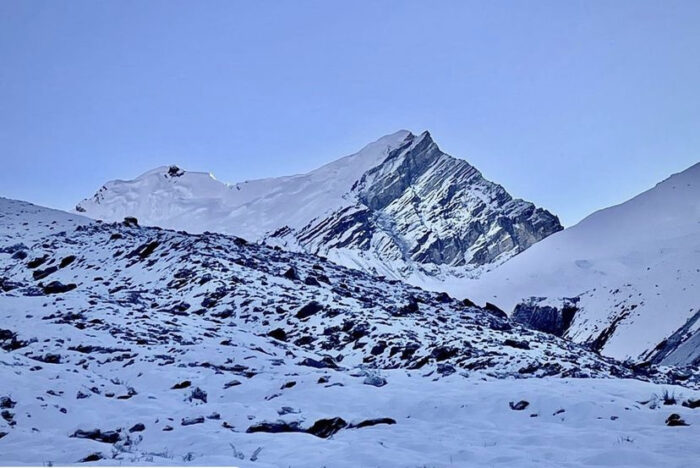
Pungi. Photo: Kisuke Goto/Japanese Alpine Club
Rarely visited peaks
Pungi (6,524m) is also on the list. It was attempted by Kisuke Goto and a team from Japan’s Himalayan Camp in 2022. Their summit push was aborted some 400m below the summit when some team members fell ill. Upon retreating, the Japanese said they would return to try again. Nepal has granted a permit to a five-member team for the unclimbed mountain.
Also interesting is Nilgiri North, the highest peak of the Nilgiri Himal, in the Annapurna region. It is an impressive peak. Its first ascent was completed in 1962 by legendary climber Lionel Terray of France. Terray was one of the first climbers of Annapurna. Terray summited Nilgiri North guiding a Dutch team.
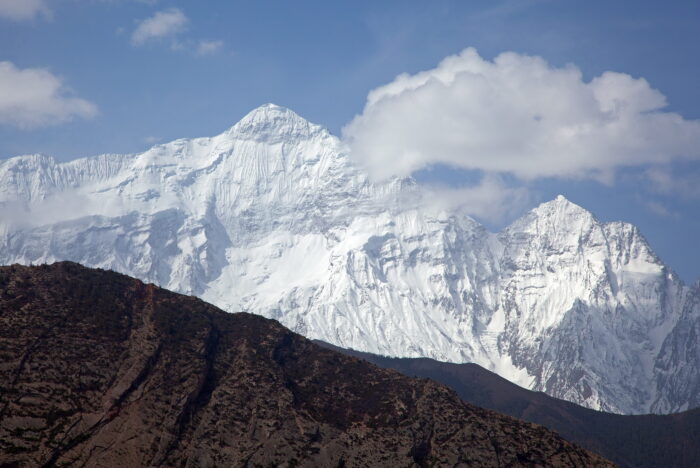
Nilgiri North. Photo: Wikipedia
Finally, there is a permit for Chandi Himal, in the far west of Nepal. The US’s Matt Powell described his climb on this mountain last year, highlighting the isolation, and the feeling of adventure. You can read that story here.


